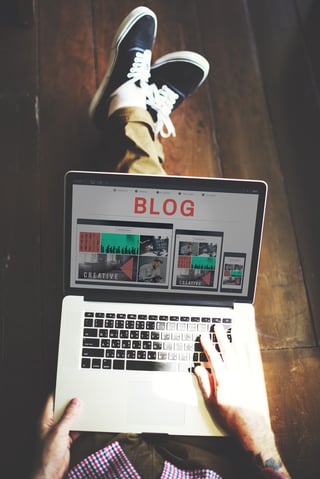If you’re already blogging as part of your content marketing efforts, you know how important it is to keep SEO in mind. But did you know there’s more to a successful SEO strategy beyond using the correct keywords? You can actually do quite a bit with optimizing the images you put on your website. Many people search Google for i mages, making it another way for visitors at the top of the funnel to stumble across your website. In fact, many of the issues people have with their SEO not doing well involve under-optimized images. Let’s look at what you can do so that doesn’t happen to you:
mages, making it another way for visitors at the top of the funnel to stumble across your website. In fact, many of the issues people have with their SEO not doing well involve under-optimized images. Let’s look at what you can do so that doesn’t happen to you:
Keep Images Related
Your keywords, images, URL, and titles should all be related to the topic of your content. This is probably the first rule of SEO- keep it all relevant. Nothing should be exactly duplicated, but using a stock photo of a kitten with a top hat in your blog about the top restaurants in town will be difficult to use for your advantage. Remember, Google is focused with user satisfaction and your viewers don’t want to be confused by photos that aren’t related to the content either.
Use Proper Image File Names
Google pulls the file name directly from your computer and uses it in searches. This filename is whatever you have the imaged saved as on your desktop or in your files. While this is easily changed, it is often overlooked. Simply leaving your files as “image1” or “shutterstock82035378” is a wasted opportunity. Instead of uploading your images to your site with random file names, try changing the file name to be something more keyword focused, like “Black_Leather_Jackets.” As an added bonus, it will be much easier to find your files with better names if you ever need them again.
Add Alt and Title Tags
Google also places a high importance on the Alt Tags and Title Tags of your images. These pieces of content help search engines understand what your images and surrounding content are about, which help you rank in image searches. Just like with your file names, try to keep them as descriptive as possible. Closely relating them to the title and URL of your page is a good idea as well.
 Pay Attention to Load Times
Pay Attention to Load Times
Your website visitors are likely to hit the back button if it loads slower than 2-3 seconds. And perhaps not surprisingly, images are often the number one culprit of slow loading times. This comes full circle, because if too many visitors click on and then right back off your website, your bounce rates will get higher. Next, Google will begin to give you less authority and your position will begin to drop. In order to ensure your load times are quick and painless, try compressing and reducing your files sizes. You want to make sure the overall size of your image is not much larger than you actually need; most websites don’t need images larger than 1,000 pixels in width.
Include Captions
Captions are important for user engagement. Studies show that captions are actually read 300% more often as the actual body of the content, because readers use them to determine whether they will spend their time reading the blog. But this type of engagement only applies if you’re following the other rules on this list. Remember, an image that isn’t correlated with the rest of the blog doesn’t keep your readers on the page. Not using captions, or not using them correctly, means missing out on an opportunity to engage a huge number of potential readers.
There are many ways to make your articles easier to read on the web, like lots of paragraph breaks, bullet points, headings, and more – but one of the key ways to make your content look attractive is by using lots of images. These images can do much more than just make your blog pretty though; they can help you rank higher in organic searches. This is just one of the areas our free eBook Modern Day SEO touches on. Download it today and get the most up-to-date help with your SEO efforts.





